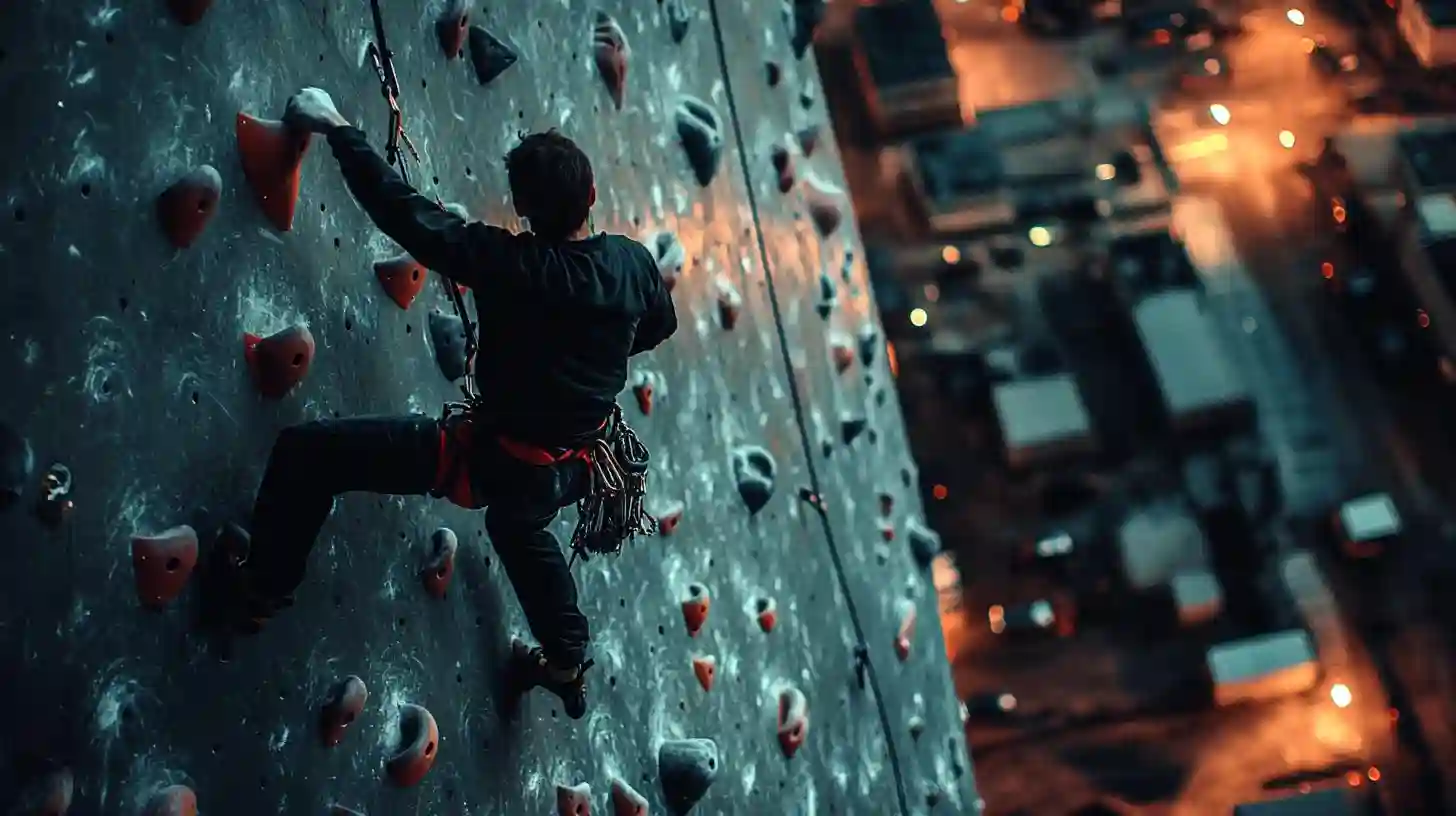
Knowledgetrovehq

As urban night climbing gains traction in cities worldwide, a unique blend of thrill-seeking and urban exploration emerges in the shadows of skyscrapers and historic buildings. This trend, sparked by adventure enthusiasts and social media influencers, reflects a broader cultural shift towards seeking excitement beyond traditional boundaries. Night climbing offers bold climbers a sense of liberation and a different perspective of urban landscapes, where the interplay of artificial lighting and natural elements creates a captivating atmosphere.
For many climbers, the allure of night climbing lies in the experience of solitude and serenity in bustling metropolitan areas. As the sun sets, urban environments transform, with fewer people around, allowing climbers to connect with their surroundings in a way that daytime routines seldom permit. The excitement of scaling a building under the blanket of darkness provides an adrenaline rush that fuels the desire for adventure. It fosters camaraderie among those who engage in this daring activity, as climbers often rely on one another for support and safety, forming tight-knit communities bound by shared experiences.
However, despite its appeal, urban night climbing carries inherent risks that cannot be overlooked. Climbing at night can obscure familiar surroundings, making it challenging to gauge potential hazards such as traffic, obstacles, or unstable surfaces. While a sense of anonymity can be exhilarating, it also means climbers must be acutely aware of their environment and potential dangers lurking in the dark. Heightened risks also stem from a lack of visibility, as climbers may be unable to see their routes clearly, making falls or accidents more likely.
Moreover, the legal implications of urban night climbing are significant and frequently underestimated. Many standardized climbing areas are governed by strict laws that prohibit unauthorized access to buildings or private properties. Individuals caught scaling skyscrapers or historical landmarks face potential trespassing charges, which can incur hefty fines or legal repercussions. As night climbing continues to rise in popularity, many urban areas are likely to tighten regulations and increase surveillance to deter such activities, making climbers more vulnerable to law enforcement actions.
Social media plays a dual role in the rise of urban night climbing, as it facilitates both community-building and potential recklessness. Platforms like Instagram and TikTok allow climbers to share their experiences, inspiring others to embark on their own nocturnal adventures. While this exposure highlights the creativity and thrill inherent in urban climbing, it can also lead to a culture of competition, where climbers push themselves to take risks for likes and views. This can result in overly daring climbs that may not prioritize safety, pushing the limits of what is reasonable or advisable.
As concerns about safety increase, so does the importance of responsible climbing practices within this community. Climbing groups and organizations are beginning to emphasize the significance of thorough preparation, including route assessment, risk management, and adherence to legal guidelines. Safety equipment, such as harnesses, ropes, and lights, becomes paramount during night climbs. Additionally, the notion of "leave no trace" is essential; climbers should respect public spaces, avoid vandalism, and minimize their environmental impact, thereby fostering a positive image for the climbing community as a whole.
The rise of urban night climbing also intersects with broader themes of urban lifestyles and societal concerns. It reflects a growing desire to challenge norms and explore spaces typically viewed as off-limits. In a world increasingly shaped by dynamic urban environments, climbers become modern-day explorers, navigating the complexities of concrete jungles much like adventurers in the untouched wilderness. This trend shines a light on the latent desire for adventure in a world dominated by technology, prompting discussions about accessibility to untapped areas within cities, such as rooftops, abandoned buildings, or overlooked structures that are ripe for exploration.
However, this newfound exploration does not come without its challenges. Urban landscapes are often designed with accessibility in mind, yet nighttime activities may still be deemed threatening or intrusive by communities. Balancing the thrill of urban night climbing with respect for local residents and their tranquility becomes paramount. Engaging with the communities that surround climbing sites, obtaining appropriate permissions, and fostering goodwill can go a long way in ensuring this daring activity is sustained in a responsible manner.
As the trend of urban night climbing continues to build momentum, the delicate balance between thrill-seeking and safety underscores a complex relationship between climbers and the urban environments they wish to explore. The interplay of danger and excitement serves as a reminder of the intricate dance between urban landscapes and adventurous spirits, prompting climbers and local authorities alike to navigate the challenges and opportunities that come with redefining the boundaries of exploration.